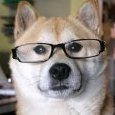-
Posts
3,040 -
Joined
-
Last visited
-
Days Won
35
Content Type
Profiles
Forums
Events
Everything posted by quang
-
Thanks you Stein for your input. Unfortunately the AMS blades are OOP
-
I am currently building the Trumpeter kit. I did some correction to the Trumpy propeller blades which are too narrow but I don't think I can reproduce the 'ledge'. Ah well...
-
Exactly Ron. The blades are mounted backwards
-
Hello guys, I took these photos of a former VNAF Skyraider on display in Saigon. Incidentally the propeller blades on this plane are mounted backwards (back to front). Should they be mounted properly, I wouldn't have noticed this curious detail: a small angled 'ledge' running lengthwise on the trailing edge of the blade. Now that I know it's there, I can see it on several other Skyraider photos although it's hard to notice since the 'ledge' is located on the back of the propeller. Can you A-1 experts shed some light on this curious detail? Thank you Quang
-
IMO it's a matter of timeline rather than model (single-seater vs fat face). The star-and-bars were inboard on the blue Skyraiders and were gradually moved outboard when the camouflage switched from Sea Blue to Light Gull Gray/white in 1955.
-
Speak for yourself. Like I said on the other thread, mine went on without any problem. Can't understand why some people insist on dissing the Revell kit.
-
One explanation would be that the photo was taken not long after the transition from dark blue to light gull gray/white camouflage. Star-and-bars on blue ADs was inboard before it migrates outboard on gray/white planes.
-
I've got a reply from Tommy Thomason (Mr Tailhook) from another site. They're probably adapter rails for practice rockets. The photo was taken during USS Forrestal 1957 cruise. Here's another one for you Tom ;-)
-
Hi guys, I'm currently building the 1/32 A-1H Skyraider from Trumpeter. Can you tell me about the stick-like ordnance these A-1 are wearing? I read somewhere that they are practice dummies. I'd like to know more about them and maybe get a link to some close-up photos. Can you help me? Cheers, Quang
-
Of course, it's FREE.... if you have a smoker friend 😜 '
-
... or use real wood 🤓. I got this small sheet years ago from a small printer who was about to close down. Didn't know what to do with it at the time. Now I know 😇
-

Echelon 1/32 Lightning........back to basics!
quang replied to gunpowder's topic in Works in Progress
I bought the Hunter trainer and the Lightning direct from Frank Brown when they were released. Top-notch kits especially the instruction sheets and decals. Unfortunately, the metal parts did not do it for me. Heavy, ill-defined (compared with resin) and a ##@@&& to get them stuck to the plastic. Anyhow good luck with your build. I will follow it with interest. Cheers, Quang -
Hi Chek, I just tried Firefox with the add-on per your advise and you know what? IT WORKS! The photos are visible now. Thanks 🙠Last night I took the old girl out of her retirement and gave her a big scrubbing with soap and water to take off the grime. I reckon she's looking not too bad. Maybe it's time to pick up where I left off and revive the old thread. If only I wasn't busy building the big Trumpy Skyraider. And there's also that Revell Mustang with the swayback fillet lurking in the background 😬 Us modellers should be granted nine lives like cats. Cheers, Q
-
I'd be happy to build just the nose turret
-
Just tried again. The photos are gone. Ah well!
-
+1 Chuck! The Photobucket fiasco was one of the reasons I stopped the build of my Fly Hurricane. Nevertheless I've just revisited my old thread for the sake of curiosity and ...BIG SURPRISE! ...THE PHOTOS ARE BACK! Surely a sign for me to dust off the Fly kit and revive the old WIP. If only I was not in the middle of another project â˜¹ï¸ Quang
-

Not another ROG P-51D Mustang? Lets call her done!
quang replied to 1to1scale's topic in Works in Progress
Or Flying Dutchman? -
Only this time I chose to differ from the instructions. Once everything's in position, the side panels were glued to the fuselage halves in the ‘old school' way. IMHO this method helps greatly in the detailing, painting and shading of the cockpit sides. HTH Q
-
As you wish, Zero 😜. HTH Quang
-
It just makes sense. Isn't it something every modeller ought to do when building a kit? Cleaning up parts before going for the glue?
-
There are many ways to build a model. My windscreen fit perfectly. No step whatsoever. See my pics above. Now that distorted central panel is another matter
-
Close-up
-
For what it's worth, here's the canopy and tail fit on my Revell kit. Quick dry assembly, no glue except for the tail section. While not 100% perfect, the fit is quite acceptable by my standards. HTH Quang
-
Believe me, you haven't seen what the surface detail on a vac-form kit REALLY looks like.
-
To a modeller from the last century (20th), the Revell Mustang would be a dream come true. Throroughly researched down to the tiniest detail, cleverly designed, adequately moulded, with clear and precise instructions and well-printed decals. I don't need the new resin add-ons supposedly destined to ease up one's life. Lest we forget, filling the tiny gaps, cleaning up joins and other small chores are just the usual fare of the average modeller.


